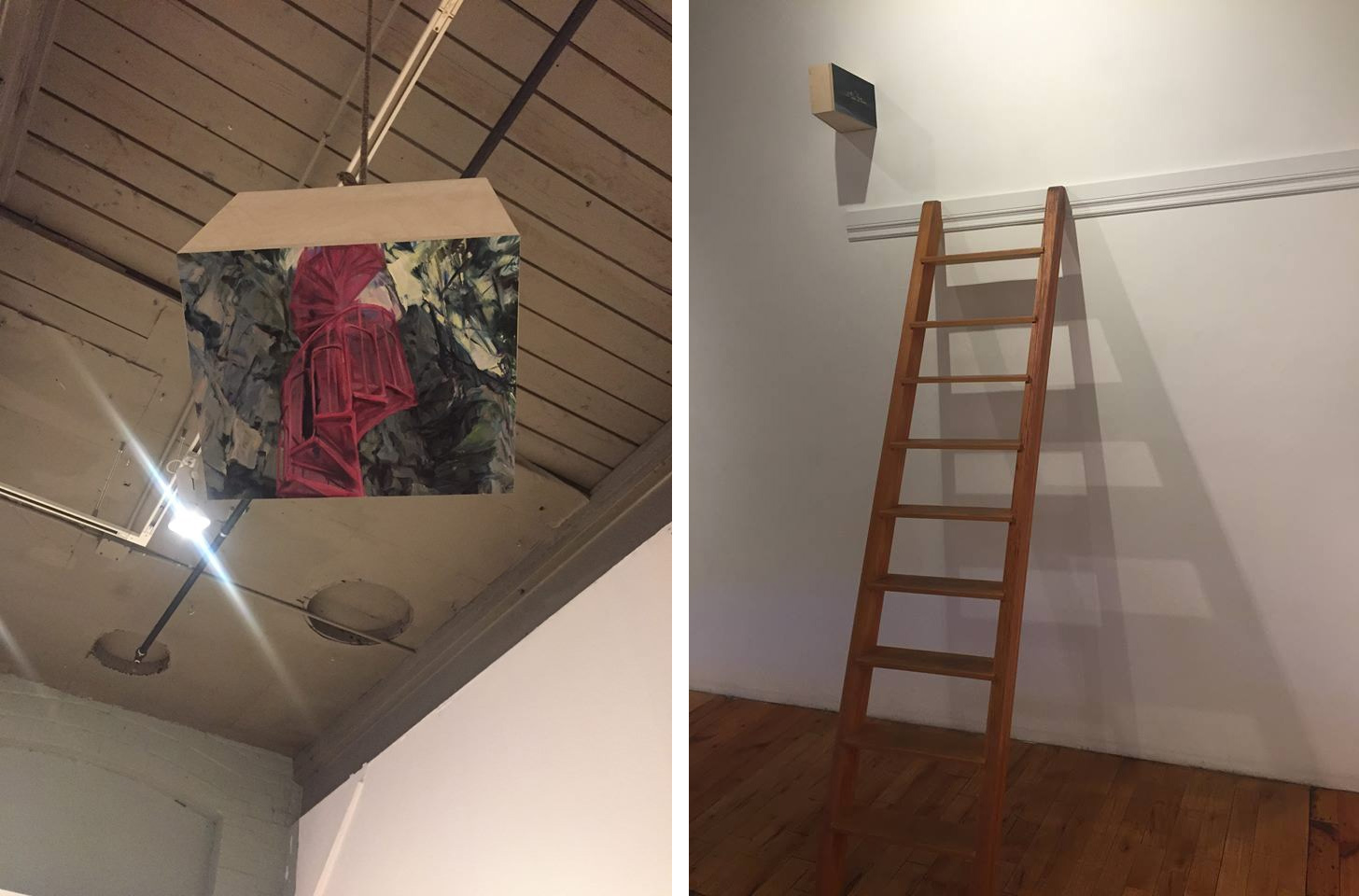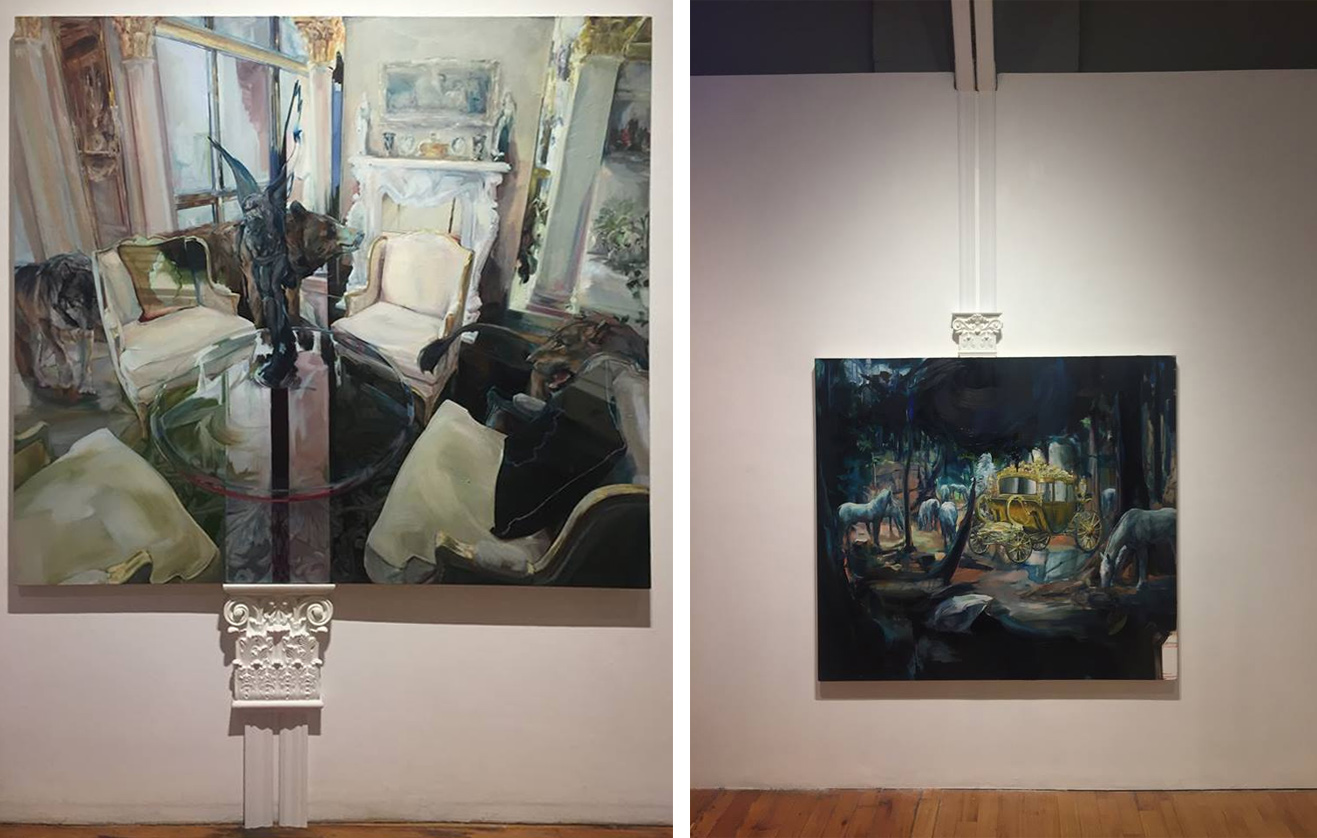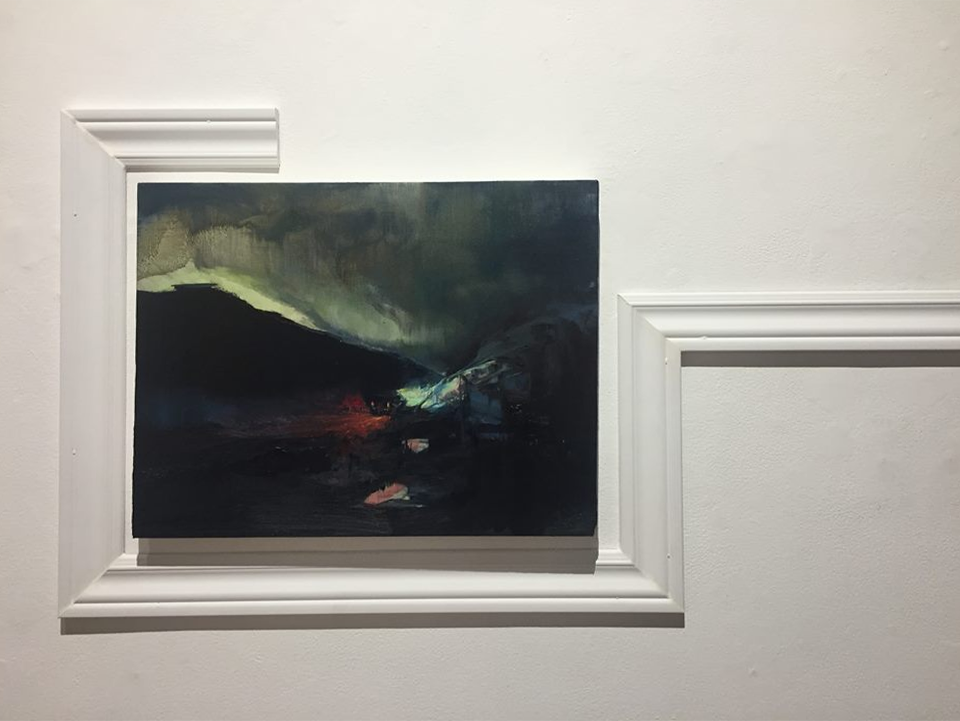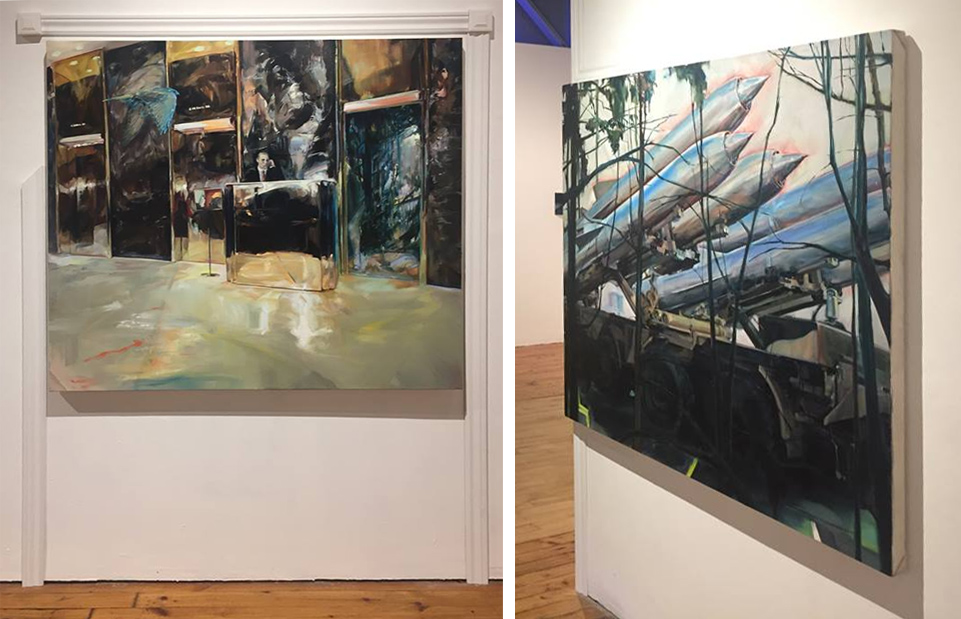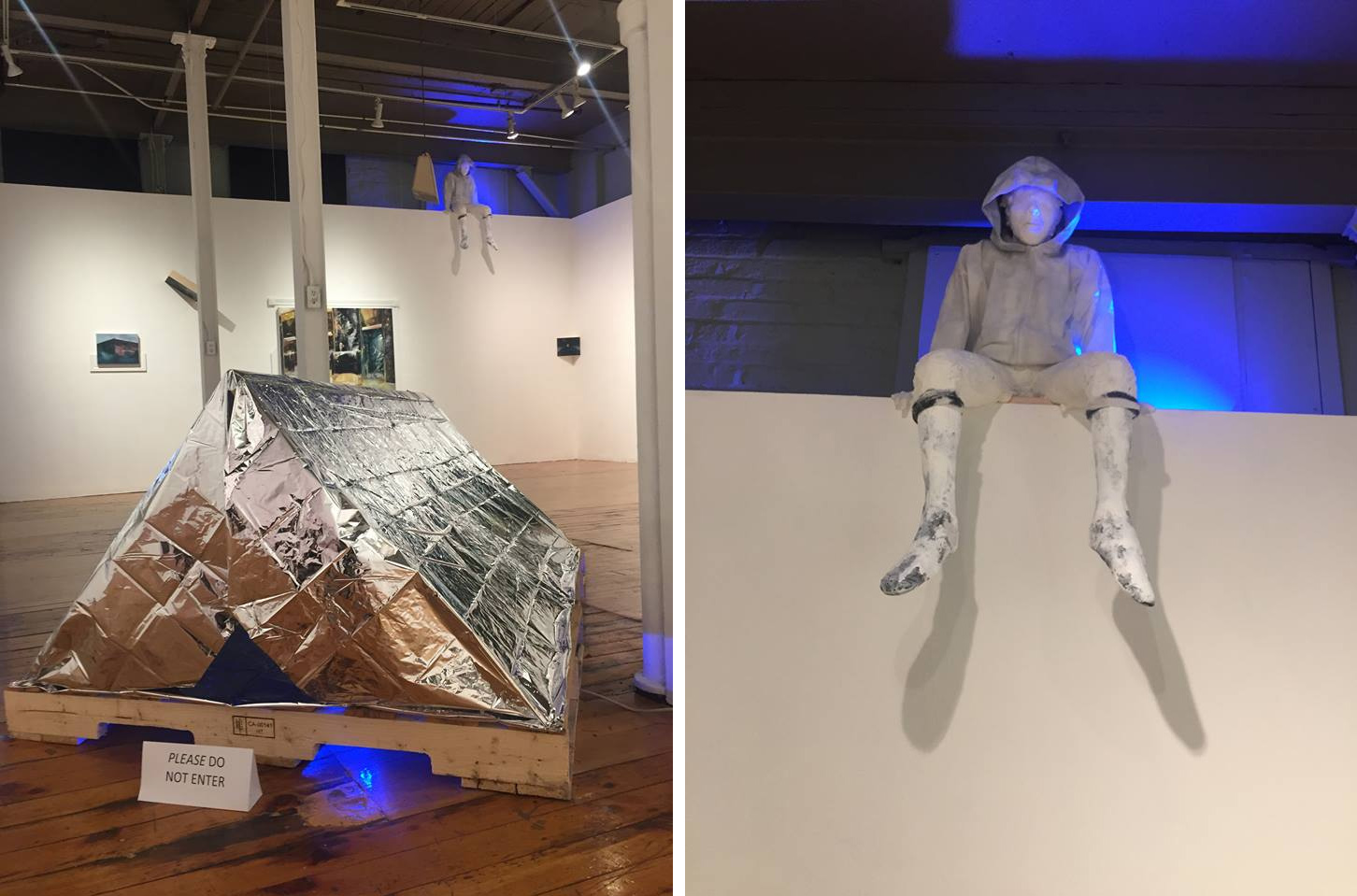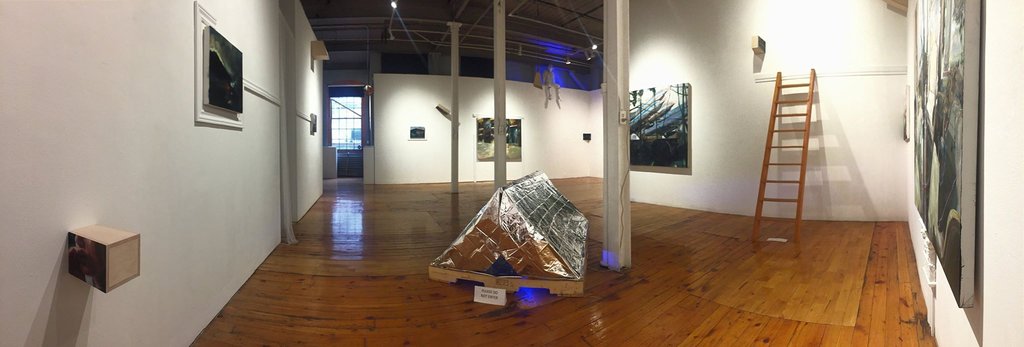From what perspective does power become beautiful? The exhibition, Towards Eternal Glory, at The Red Head Gallery by Gillian Iles, has masterfully explored this question through the multidisciplinary mediums and thoughtful curatorship demonstrated throughout the interactive and immersive installation. Four large scale paintings are accompanied by five smaller works, which are then further accompanied by a number of small pieces dispersed throughout the space in almost a hide-and-seek fashion.
Audiences are often challenged by artwork to shift their perspective on sociopolitical or aesthetic matters. Towards Eternal Glory has embraced this notion, but taken it much further by thoroughly applying it to nearly every component of the exhibition, on both a conceptual and a physical level. The physical and the simulated space is interconnected here. The painted imagery is often shifted away from a normal standing gaze, as the placement of some paintings in the gallery are atypical, often requiring bending, looking awry or even climbing a ladder!
Upon entering the gallery, the traditionally displayed works are the first to draw the viewer’s attention. Audiences are drawn to familiarity, and this is an intentionally good starting point for the exhibition. The paintings range in scale and contain disparate imagery from romantic scenes of aristocracy to depictions of the sleek technology of an industrial military complex. Each of these works contain natural elements of flora and fauna, sometimes in fantastic, surreal ways.
These canvases are mostly unframed. Frame, on the other hand, has its own glory in this exhibition. The fragmented pieces of frame and architectural moulding are both hold their aesthetic values, but also stand for a conceptual deconstruction of frameworks and perspectives as a whole. Lines of moulding displayed around some paintings have been intervened with, to challenge our expectations and to lead us through space instead of fixating us in place.
Entry ways are a primary theme throughout the gallery, as many of the paintings are being positioned at doorways or looking within a space from a vantage point. Doors and openings are important as a signage to let us know what pieces of art are allowed or not allowed to be entered into. This addresses our tendency to follow rules and routines but that doesn’t mean that we have to, and as critical thinkers we need to question them and take back the power of control they have in our lives.
North Korean missiles and a concierge in the lobby of a corporate building are examples of ways that are used to protect the interests of the elite and reject the outsider. Iles, in her statement, suggests that these grandiose forms of intimidation contain an unintentional feeling of sublime and beauty, which arguably contributes further to their power, but also has the potential of undoing it. If we can look at these from new perspectives, we can dissolute the dominance and power they hold over the public. Further beauty comes from plants and animals that permeate the works and, as the artist suggests, will reclaim their territories.
The installation also contains a basic ridge tent on a wooden skid made of metallic mylar, the material of fire or thermal blankets. At both openings there are signs indicating that you are not allowed to enter. A stark-white, shoeless figure wearing a hoodie is sitting high above the gallery wall, looking down on the viewers. The tent and the boy have a distinct relationship to the audience compared to the rest of the work in the space, as they seem to represent a more real, accessible and relatable disposition. Ironically, they are the only works that are physically removed from the audience’s grasp. The ordinary tent and the use of signage at its entry seems to mirror the denial of access, but from an impoverished perspective instead of an elite one. The figure looking down on the gallery, a presumably youth-like model, has the highest and arguably most objective perspective in the gallery.
Iles, using an array of well executed mediums and creative curatorial decisions, has created an engaging installation that has a strong critical message immersed in beautiful and interesting imagery and design.
Nathan Flint
*Exhibition information: March 29 – April 21, The Red Head Gallery, 401 Richmond Street West, Suite 115, Toronto. Gallery hours: Wed – Sat, 11 – 5 pm.


